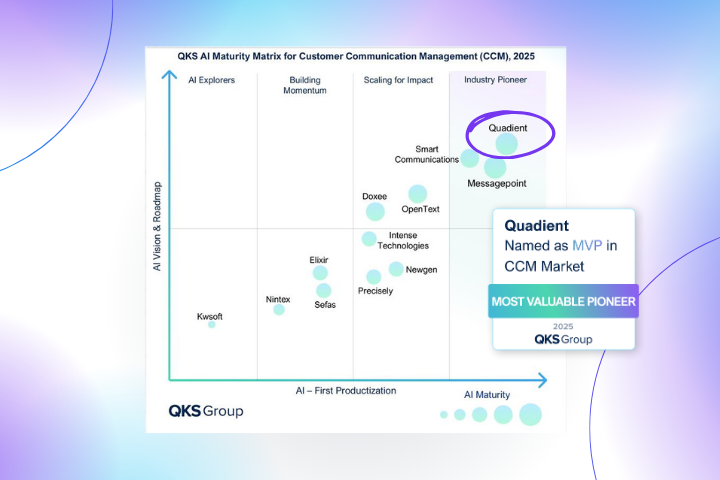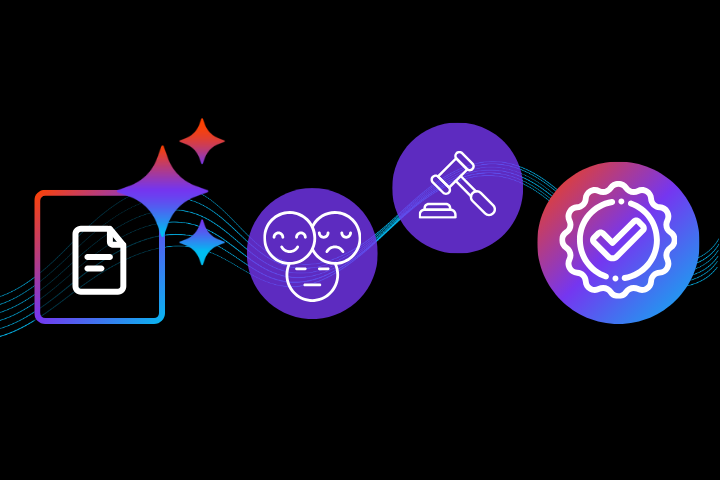
Retained billing doesn’t have to be a gamble. Rewrite your own Mad Men story with Quadient AR Retention.
In the early 2000s hit drama Mad Men, opulent Madison-Avenue ad agency Sterling Cooper relied on retainers from big-name clients to cover their lavish spending. But when their biggest client left for another agency, they scrambled to stay afloat and were forced to downsize.
This is the gamble of retained billing in a nutshell. It’s a great model—but you can’t bet on it. Why? Because retained invoices follow a different lifecycle. Customers don’t pay them until projects are complete. That means collection efforts can be mistimed and cash flow projections misleading, leaving you:
- Short on working capital
- Struggling to accurately forecast revenue
- And scrambling like Don Draper
But there is good news! By treating retained invoices differently—tracking them separately, automating recognition, and aligning collections with project milestones—you can maintain a steady cash flow you can bet on.
Retained billing is good for your customers—and your business.
Businesses that work on a project basis—from advertising agencies like Sterling Cooper to professional services, engineering, and construction firms—often employ a retained billing model. If you already use it, you know it’s where customers pay a portion upfront and the remainder upon project completion. And, you probably already know that your Finance Department has a love-hate relationship with the approach.
Your customers get valuable assurance that you’ll complete a job to their satisfaction while protecting them against common issues like liens, contractual defaults, and delays. That’s great for building customer relationships and brand reputation. So, what’s the downside? Depends on who you ask.
Retention = real cashflow risk
Retention can have a major impact on inbound cash, especially if you have a high amount of retained receivables across your client base. Customers may fail to make payments on time—or default altogether. Best case, you face disputes. Lesser case, you rob Peter to pay Paul while you wait for your check. Worst case, you find yourself in the red.
Take Carillion as an example. Carillion was once the second-largest construction company in the U.K., with massive contracts spanning hospitals, roads, railways, and public infrastructure. But in January 2018, it went under due in large part to uncollected cash from retained billing. The company had so much revenue tied up in retainage that it couldn’t cover expenses.
Growing economic pressures are driving retention risk. The more dependent you are on external conditions—and the more projects you bill within the retention model—the greater your exposure. It’s that simple.
Few industries feel this pressure more than construction. Increasing 12.5% annually and expected to reach $21.67 billion USD by 2030, it’s one of the world’s fastest-growing markets. But rising material costs, supply chain bottlenecks, and budget restrictions are increasing delays—or halting work entirely—leaving businesses waiting longer than ever for retained payments.
Other project-based industries aren’t far behind. Professional services firms in particular operate largely on retainers. As budgets tighten, projects are being rescoped, bottlenecked, and cancelled. In the worst cases, customers are cutting external contracts altogether.
It’s no wonder experts like Deloitte strongly recommend prioritizing cash flow management. Their advice? Invest in strong accounting practices, such as:
- Setting fixed payment terms
- Increasing scrutiny of costs versus overhead
- Keeping an eye on financial data to identify areas for improvement
By taking proactive measures, you can protect yourself from the financial instability caused by delayed or uncollected retained payments.
Treat retained invoices differently. Because they are different.
If you’re still processing retained invoices the same as standard invoices, chances are you’re mismanaging cash flow, delaying revenue recognition, and facing inaccurate reporting. Quadient AR Retention, a module of our AR automation solution, automatically tracks retainage, separates retained invoices, and recognizes revenue at the right time. So, you maintain steady cash flow as you hit milestones and complete projects—and you can see what’s due when and how it impacts your bottom line.
The system doesn’t treat retained amounts as payables until they’re released—which protects you from unnecessary hits to your financial records. Once released, invoices are processed like standard receivables. This ensures that payment scores reflect actual outstanding balances (not withheld retainage). In other words, once the full amount (minus retainage) is paid, the invoice is considered settled. That’s stability you can bet on!
Quadient AR Retention also delivers:
- Clear cash flow visibility: Your outstanding balance reflects only what’s currently due, not future unbilled revenue.
- Flexible invoicing: You can generate invoices in a way that fits your business and your customer’s preferences; a single invoice with multiple retainage invoices attached or multiple original invoices.
- Accurate revenue recognition: Retained amounts start aging when they’re released, not when they’re initially invoiced. This prevents them from being misclassified as overdue and gives you a true picture of cash flow.
- The right collections activity at the right time: Seamless ERP integration ensures that collection efforts align with project milestones to reduce inefficiencies and disputes. So, you can track retained costs, automate invoicing, and recognize revenue across multiple jobs.
- Smarter reporting. Standard aging reports factor into released retainage for a more accurate financial snapshot.
AR innovations that supercharge retention management
Unlike Sterling Cooper in the 1960s, you have access to advanced technologies to protect you from retention risk. By combining a separate approach with these forward-thinking innovations, you can streamline AR management, accelerate payments, and maintain stronger control over cash flow:
- Business intelligence. See the impact of retainage, address disruptions before they become business critical, and get a tighter grip on your cash position with built-in analytics.
- Advanced credit assessment. Every project-based business extends customer credit—and Quadient makes it fast, easy, and reliable. Intelligent, built-in scoring eliminates the need for external credit checks while helping you make instant decisions based on payment history and real-time financial data from Creditsafe and Dun & Bradstreet.
- Text-based customer communication. SMS messaging capabilities within Quadient AR let you send invoice reminders and payment updates directly to your customer’s mobile device, increasing the likelihood of on-time payments. This feature is especially valuable when teams are often on job sites or working remotely, ensuring that payment communications reach the right people in real time.
Get right with retainage today
Retained billing doesn’t have to be a gamble. Rewrite your own Mad Men story with Quadient AR Retention. Book a demo today to learn how to process retained invoices differently to improve visibility, reduce payment delays and defaults, and drive steady cash flow for your business.








